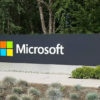Researchers from security firm IOActive have discovered a series of vulnerabilities and attacks that they believe could be possible on Boeing’s 787 Dreamliner.
The issues were found by analyzing firmware that was exposed online last year from a publicly accessible Boeing server. In addition to firmware on the Crew Information System/Maintenance System (CIS/MS) and Onboard Networking System (ONS) for the Boeing 787 and 737 models, the server also leaked a Linux-based Virtual Machine engineers use to access part of the Boeing’s network.
The vulnerabilities were discovered through the analysis of information from public sources and collected documents, and reverse engineering the Honeywell-developed 787 CIS/MS firmware. The work, however, was performed on a non-avionics, non-certified platform and no live testing was done to confirm the vulnerabilities.
The Common Core System (CCS) on the 787 is a hardware/software platform designed to deliver computing, communication, and input-output (I/O) services for implementing real-time hosted functions.
A virtual system partitioning environment, however, guarantees that hosted functions are isolated from each other, meaning that both highly critical and low level applications are supported. Even if faults might appear within the hosted functions or the platform resources, the applications should not interfere with each other, IOActive’s Ruben Santamarta explains.
What IOActive found was hundreds of references to insecure function calls in the custom parts of CIS’ VxWorks kernel implementation. The researchers also discovered additional vulnerable patterns, including integer overflows, buffer overflows, denial of service, out-of-bound reads and writes, memory corruptions, and more.
In a report detailing the findings, IOActive reveals that it contacted both Boeing and Honeywell to report these vulnerabilities, and that both organizations confirmed the existence of these issues in the 787’s Core Network codebase.
However, Boeing told IOActive that it was not able to reproduce the flaws and that they do not consider them to be exploitable vulnerabilities. The company also said that they have mitigations in place to prevent the vulnerabilities from being exploited.
Boeing has split the 787’s digital systems into three separate parts, namely an Open Data Network (ODN), hosting non-sensitive components, an Isolated Data Network (IDN), with somewhat more sensitive components, including the CIS, and a Common Data Network (CDN), where avionics and safety systems reside. An attacker would have to compromise the CDN from the ODN, the researchers say.
“Without a 787, a 787 lab environment, or an explanation of the controls, IOActive is unable to confirm Boeing’s claims of compensating controls or mitigations for these software vulnerabilities,” the security firm notes.
Related: Critical Industries at Risk from Eleven Zero-days in Real Time Operating System
Related: Aircraft Parts Maker ASCO Severely Hit by Ransomware














